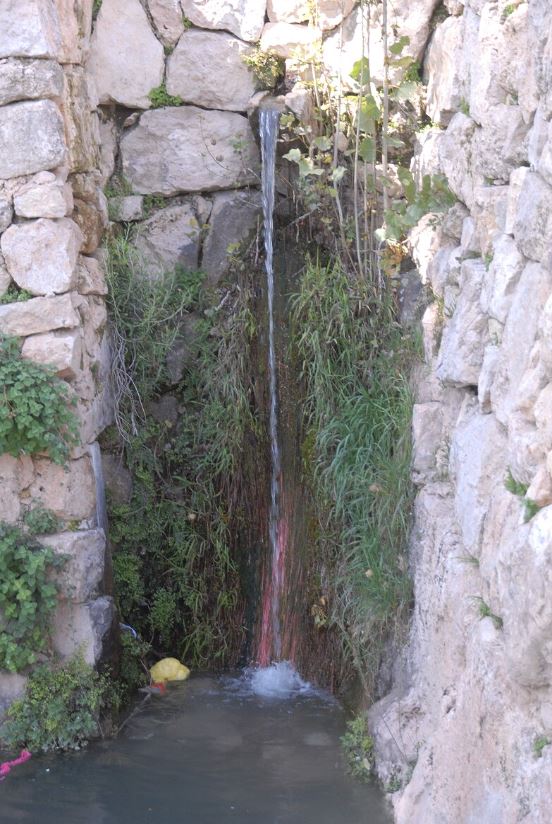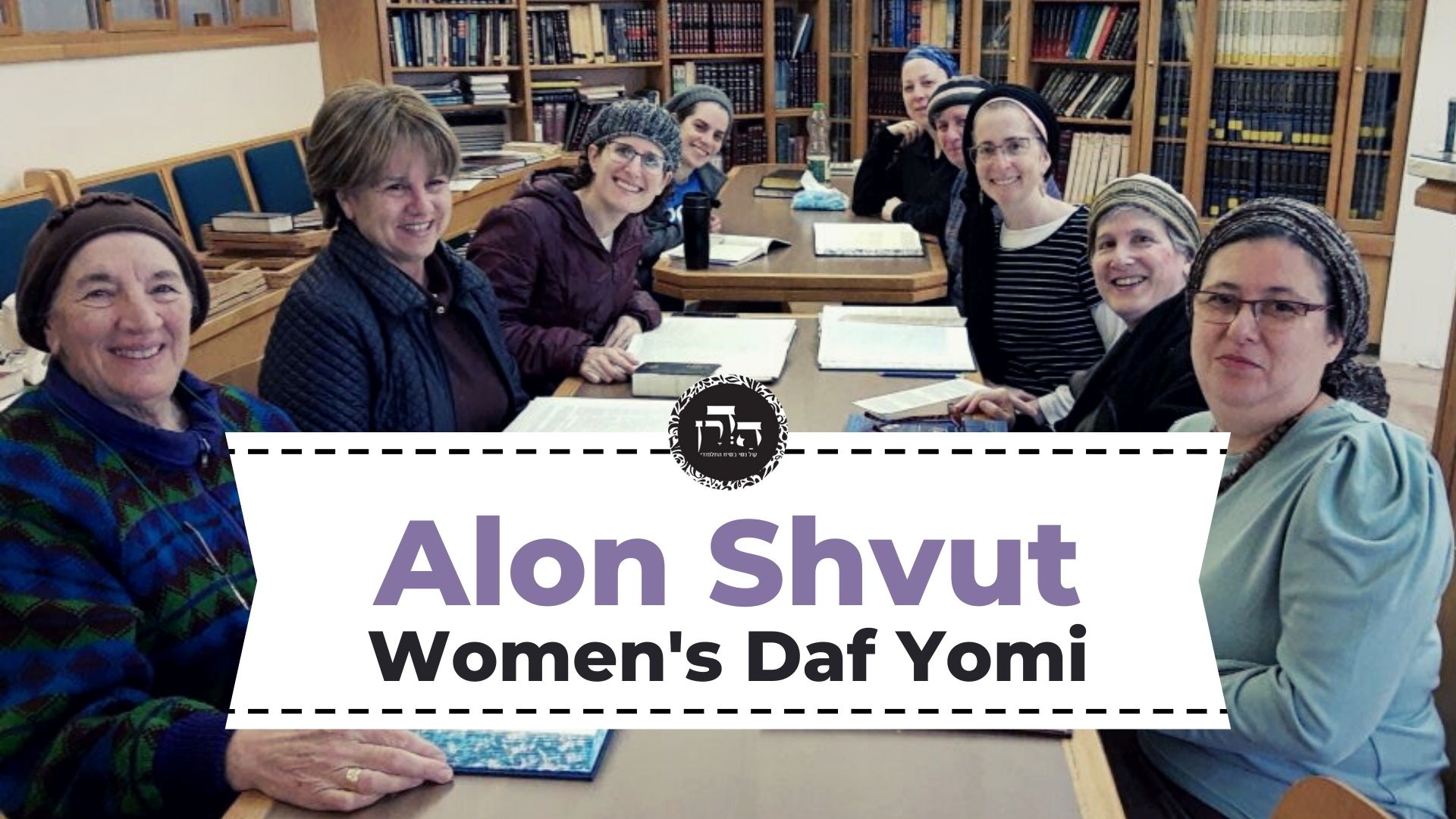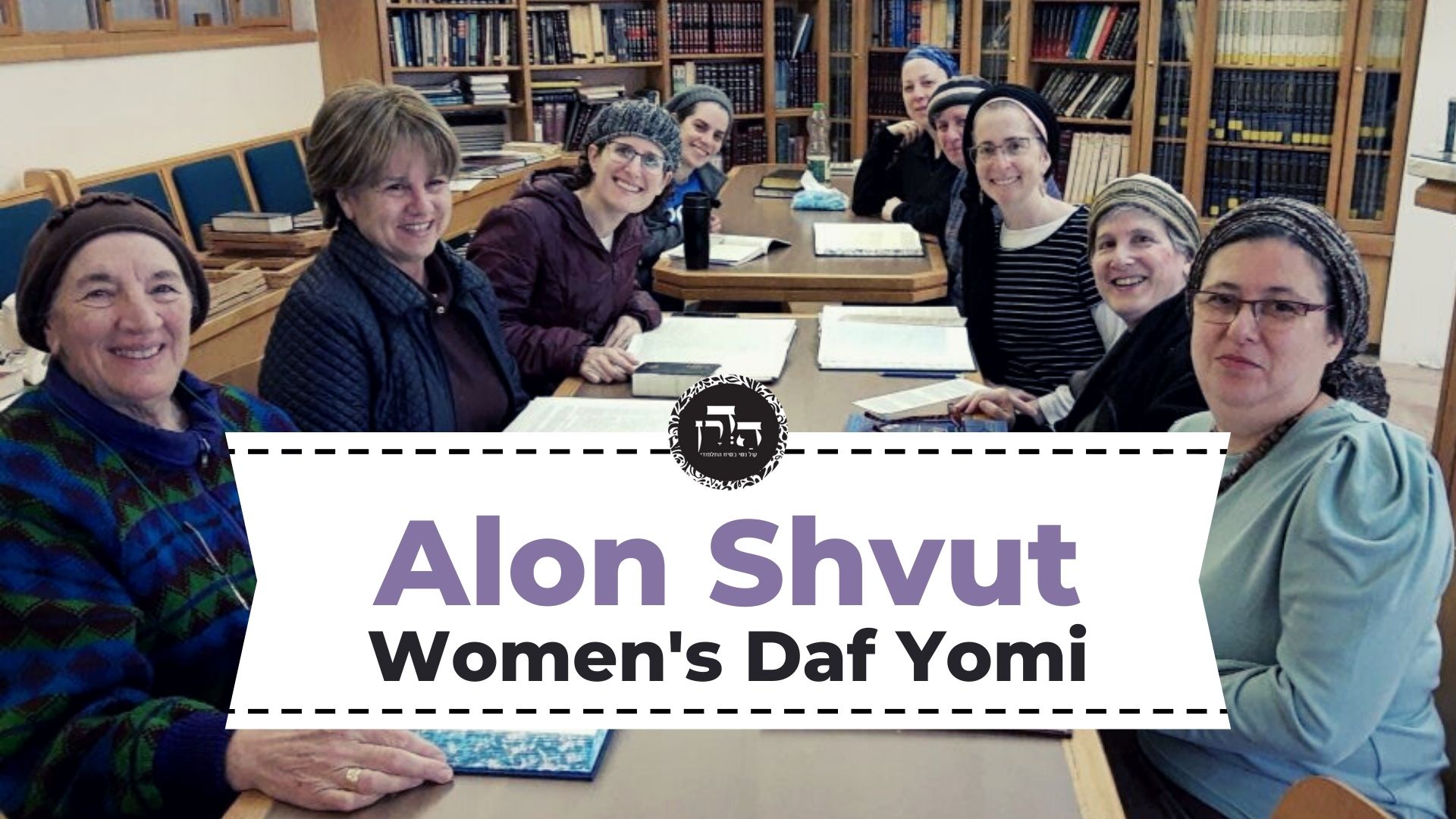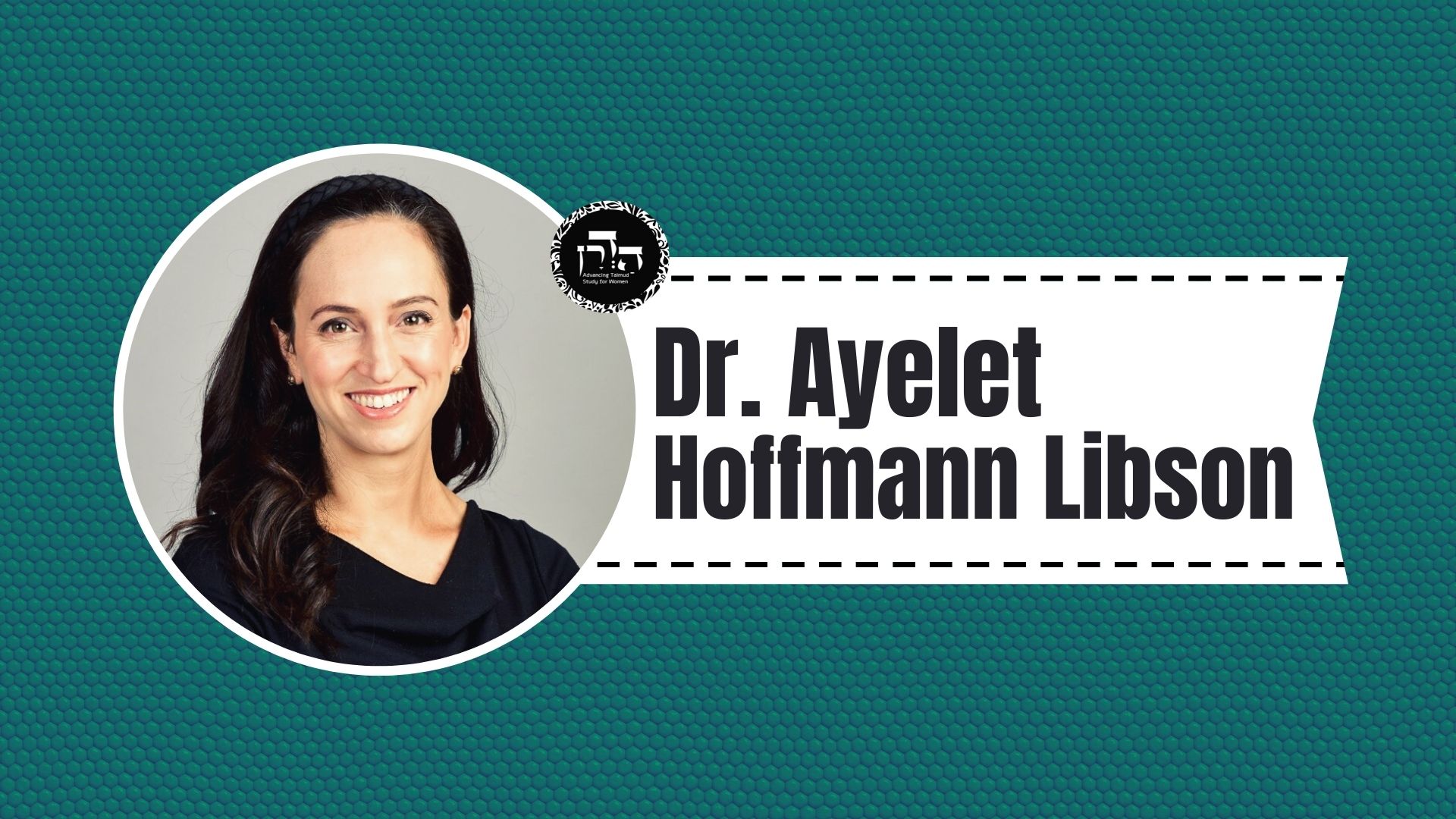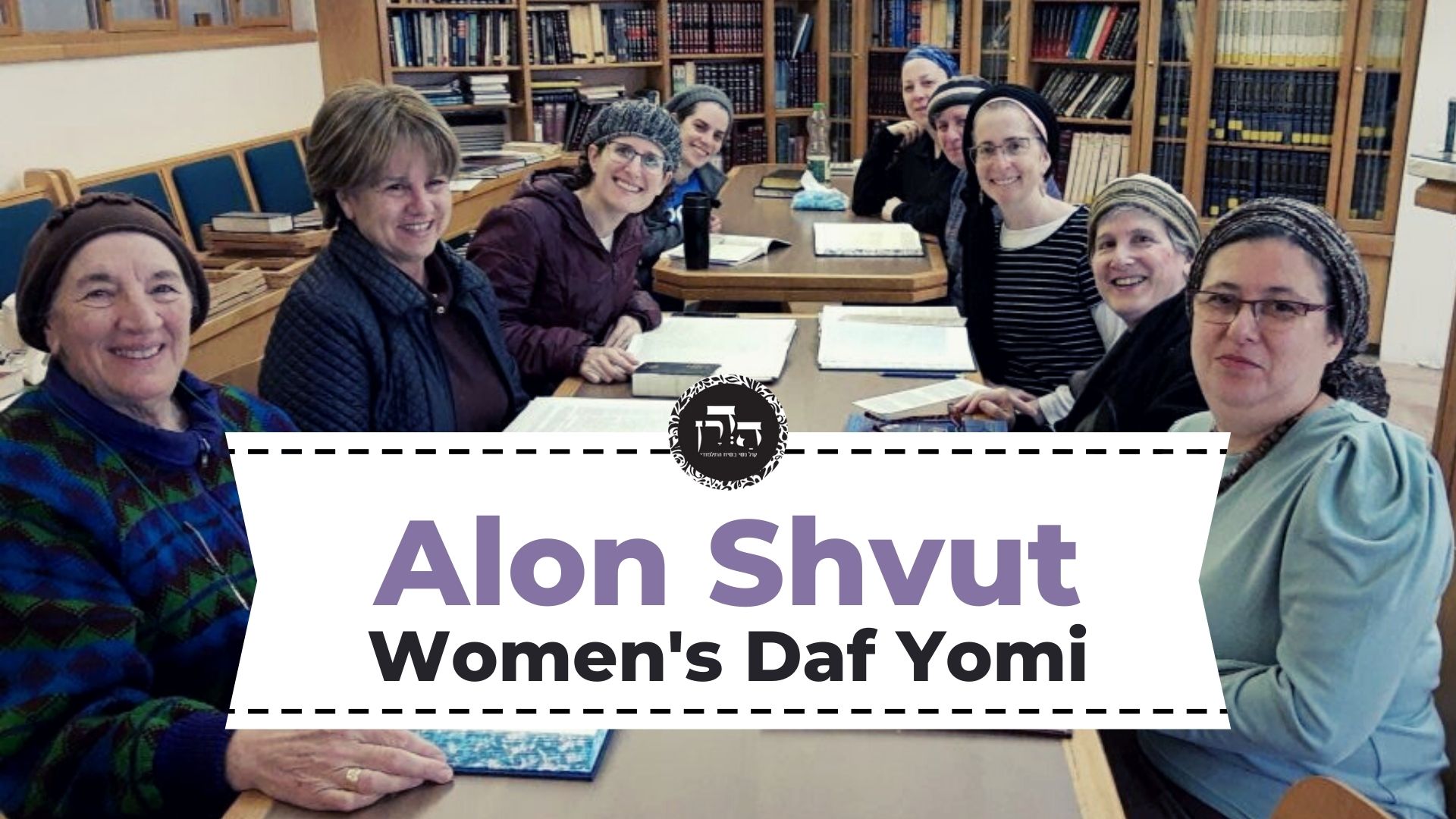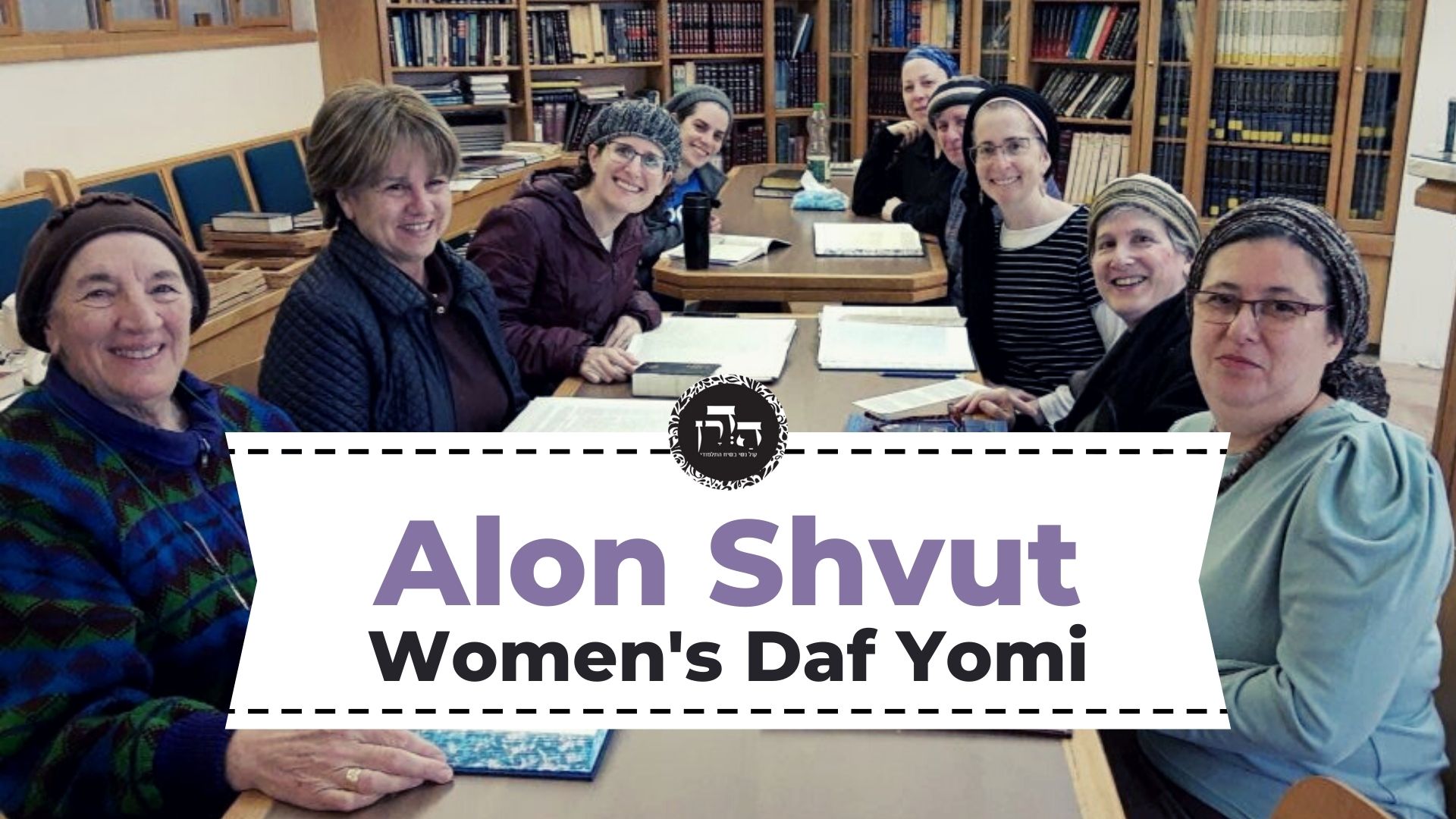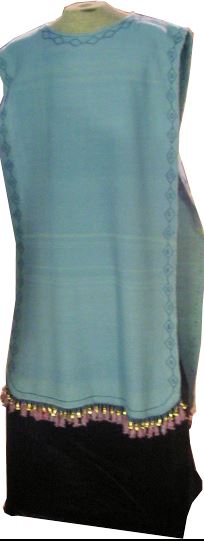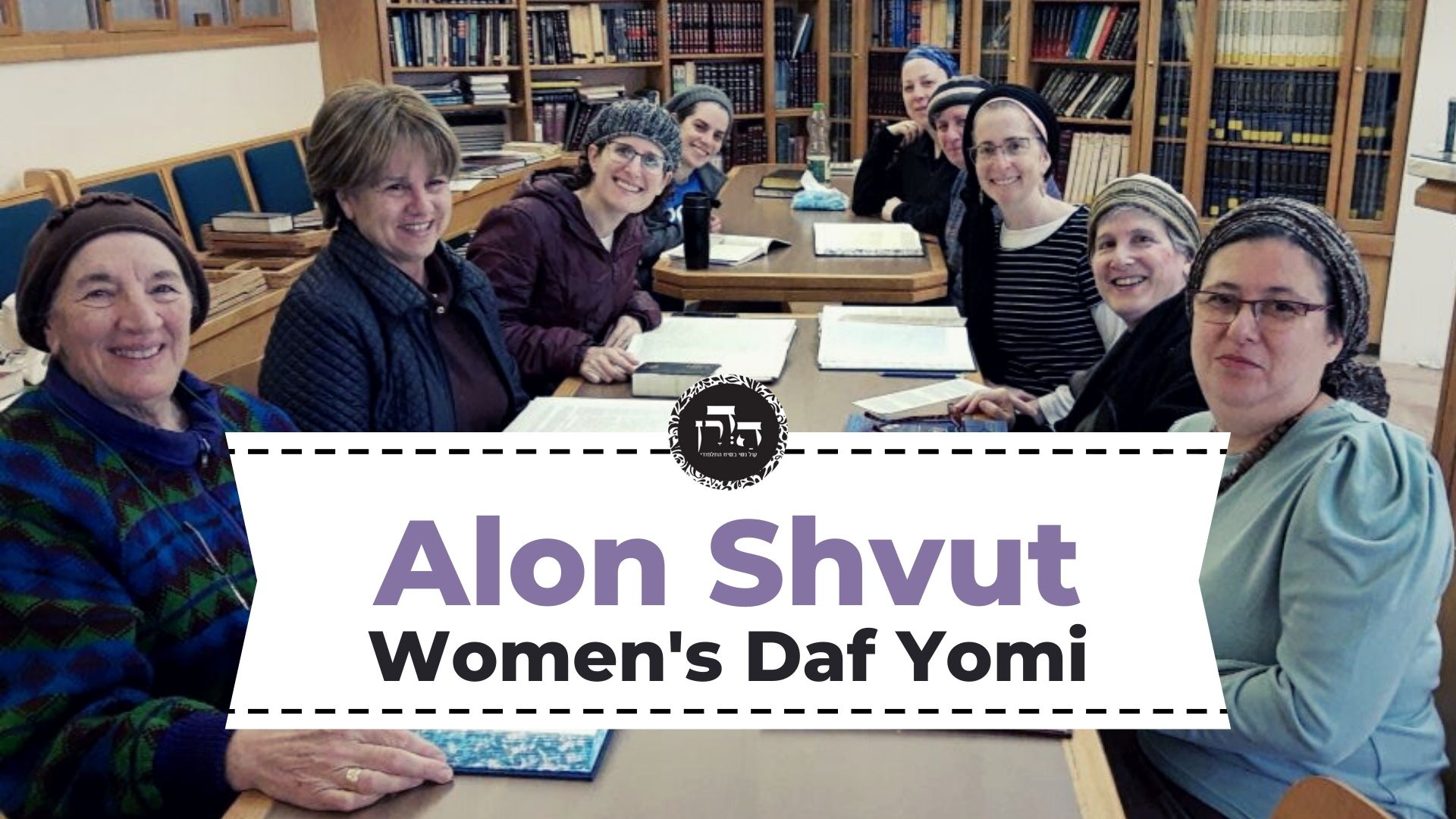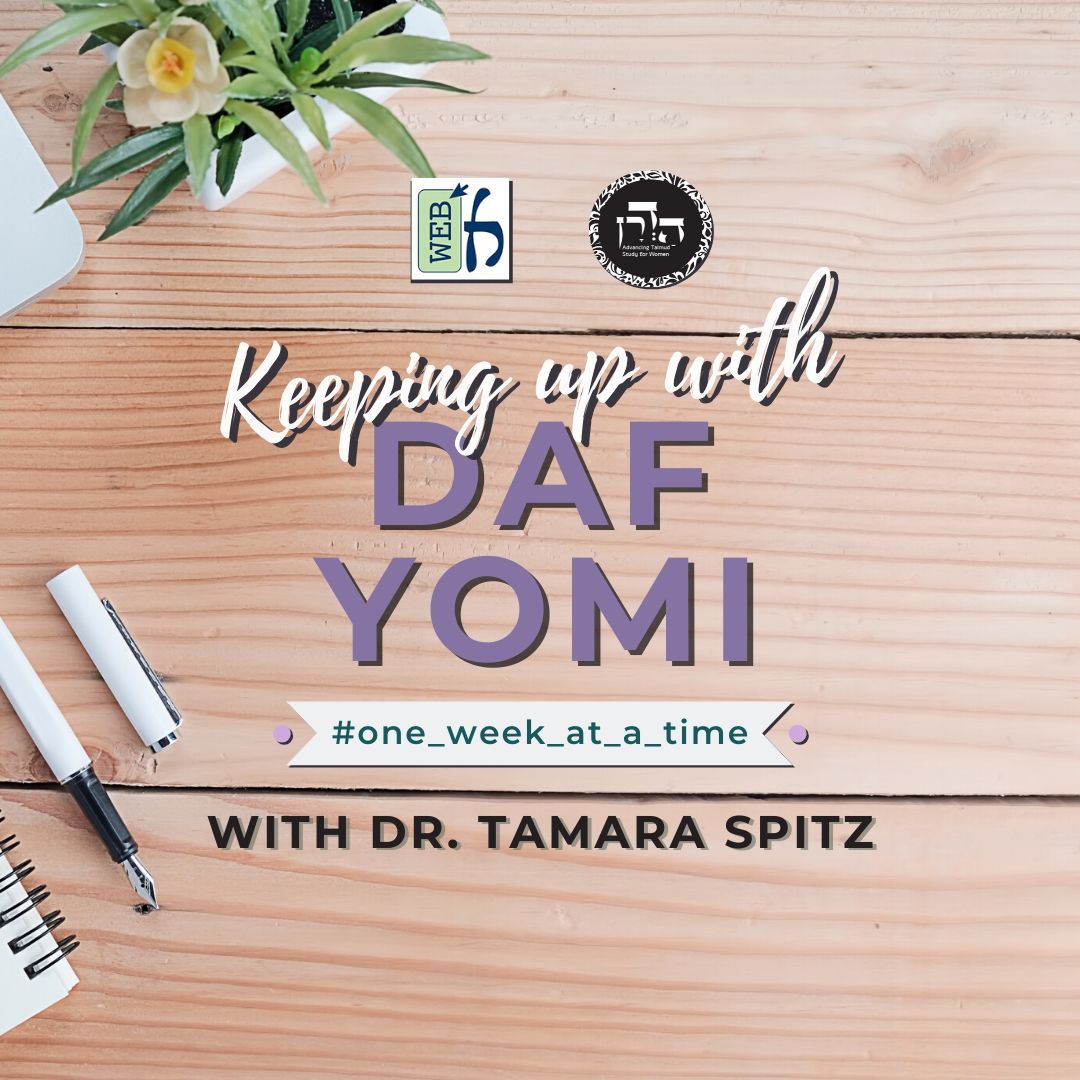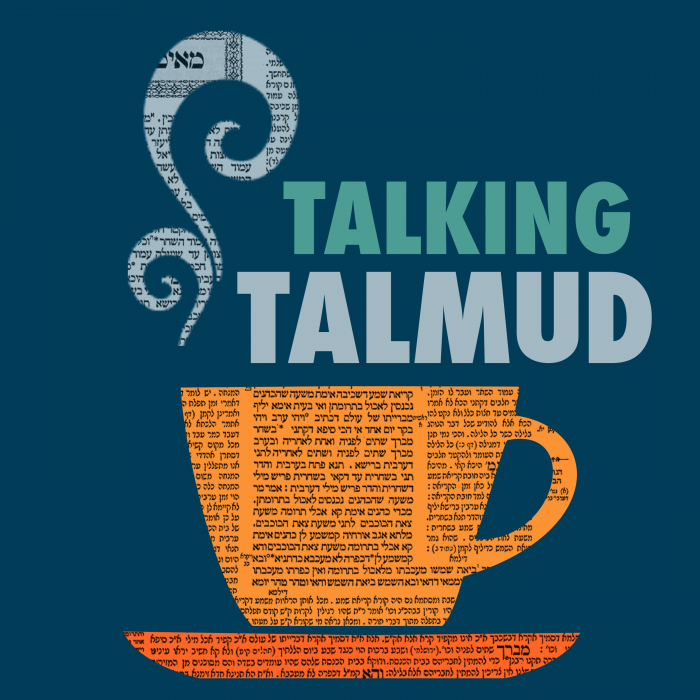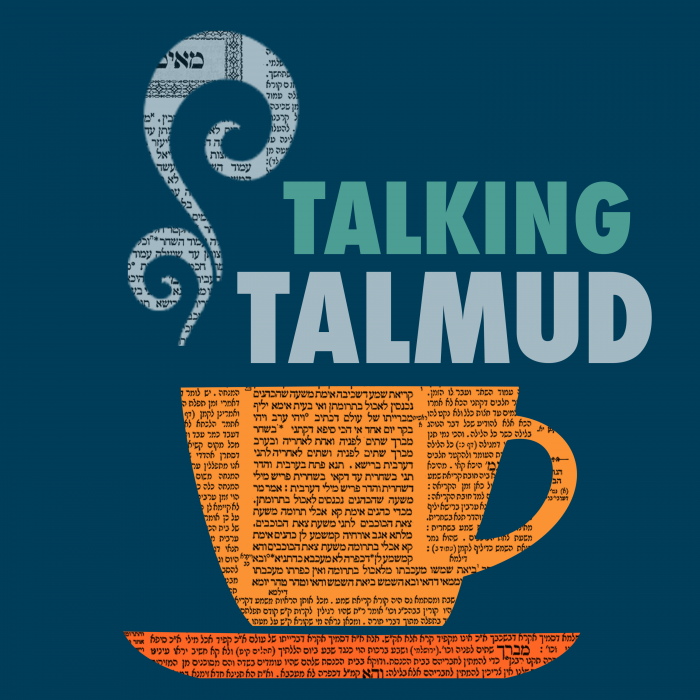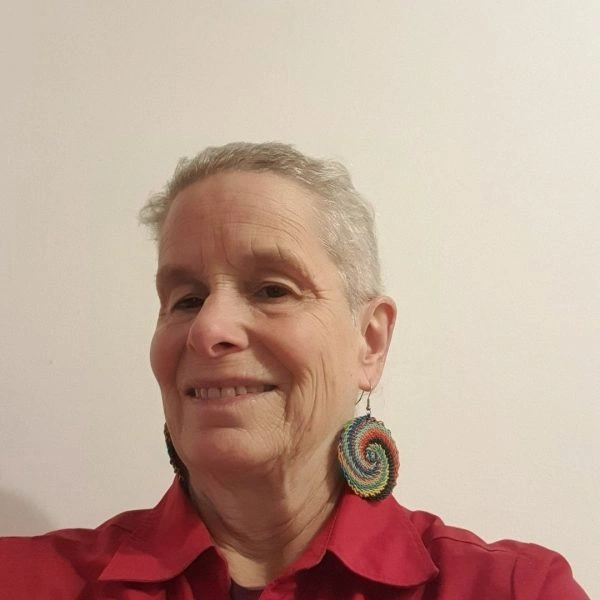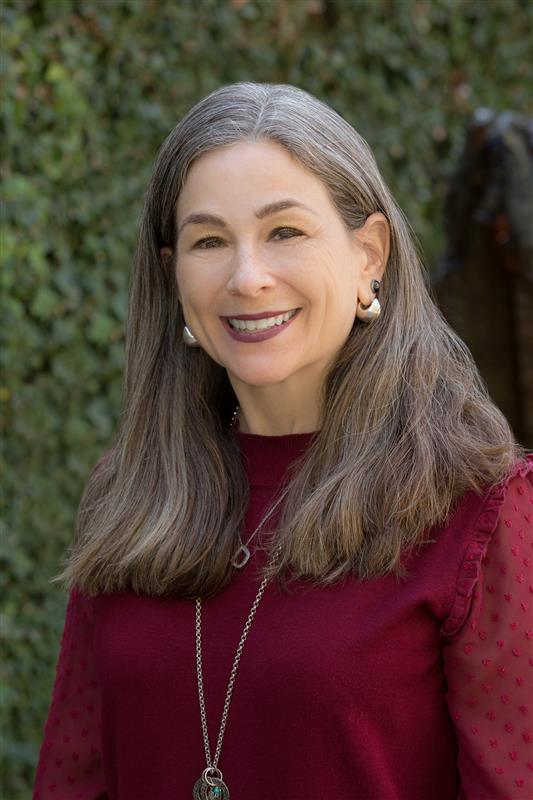Rav Dimi says that the Kohen who is anointed to strengthen the soldiers when going out to war wears the garments of the Kohen Gadol when he works in the Temple. Ravin says that he wears them when consulting with God through the Urim v’Tumim. Two questions are raised against Rav Dimi. Through these questions, an answer is given that the Kohen who is anointed for war cannot wear the Kohen Gadol’s clothing due to jealousy of the Kohen Gadol (by Torah law, he can but the rabbis prohibited). A question is brought from a source that compares all the laws regarding the Kohen Gadol/former Kohen Gadol/and Kohen for war seems to indicate that jealousy is not a concern and yet the Kohen for war does not wear the same clothes as the Kohen Gadol. How is this resolved? Ravin brings a different statement regarding the Kohen for war and the clothing of the Kohen Gadol – he wears them when he consults with the Urim v’Tumim. How does one consult with the Urim v’Tumim? Examples are brought from the Prophets to learn what is said, how it should be said, etc. How was the answer given? What is forbidden on Yom Kippur? What are exceptions to the rule? What is the requisite amount of food that can’t be eaten? Can foods and drinks combine to get to the requisite amount? Is it forbidden by Torah law to eat less than the requisite amount (chatzi shiur)?
Yoma 73
Share this shiur:
This month’s learning is sponsored by Beth Balkany in honor of their granddaughter, Devorah Chana Serach Eichel. “May she grow up to be a lifelong learner.”
This month’s learning is dedicated in memory of Rabbi Dr. Raymond Harari z”l, on his 1st yahrzeit. As an educator, principal of Yeshiva of Flatbush, and community rabbi, he inspired thousands with his wisdom, warmth, and unwavering commitment to Torah.
Want to dedicate learning? Get started here:


This month’s learning is sponsored by Beth Balkany in honor of their granddaughter, Devorah Chana Serach Eichel. “May she grow up to be a lifelong learner.”
This month’s learning is dedicated in memory of Rabbi Dr. Raymond Harari z”l, on his 1st yahrzeit. As an educator, principal of Yeshiva of Flatbush, and community rabbi, he inspired thousands with his wisdom, warmth, and unwavering commitment to Torah.
Delve Deeper
Broaden your understanding of the topics on this daf with classes and podcasts from top women Talmud scholars.
New to Talmud?
Check out our resources designed to help you navigate a page of Talmud – and study at the pace, level and style that fits you.
The Hadran Women’s Tapestry
Meet the diverse women learning Gemara at Hadran and hear their stories.
Yoma 73
תַּלְמוּד לוֹמַר: ״שִׁבְעַת יָמִים יִלְבָּשָׁם הַכֹּהֵן תַּחְתָּיו מִבָּנָיו אֲשֶׁר יָבֹא אֶל אֹהֶל מוֹעֵד״, מִי שֶׁרָאוּי לָבֹא אֶל אֹהֶל מוֹעֵד. וְאִם אִיתָא — מִיחְזֵא חֲזֵי!
therefore, the verse states: “Seven days shall he wear them, the one who serves in his stead from among his sons, who comes into the Tent of Meeting to serve in the Sanctuary” (Exodus 29:30). The verse describes a son serving in the place of his father, indicating that the position is inherited. The conclusion of the verse implies that the rule that a son inherits his father’s position applies only to a High Priest who is fit to enter the Tent of Meeting, but not to the priest anointed for war. Based on this baraita, the following challenge is posed: And if it is so, since the priest anointed for war also serves wearing the same garments as the High Priest, he is also fit to enter the Tent of Meeting and should bequeath his position to his son.
אָמַר רַב נַחְמָן בַּר יִצְחָק, הָכִי קָאָמַר: כׇּל שֶׁעִיקַּר מְשִׁיחָתוֹ לְאֹהֶל מוֹעֵד. יָצָא זֶה, שֶׁעִיקַּר מְשִׁיחָתוֹ לְמִלְחָמָה.
Rav Naḥman bar Yitzḥak said that this is what the baraita is saying: The rule that a son inherits his father’s position applies to anyone for whom the primary purpose of his anointment is to come and serve in the Tent of Meeting. That excludes this priest for whom the primary purpose of his anointment is for war.
מֵיתִיבִי: מְשׁוּחַ מִלְחָמָה אֵינוֹ מְשַׁמֵּשׁ לֹא בְּאַרְבָּעָה כְּכֹהֵן הֶדְיוֹט, לֹא בִּשְׁמוֹנָה כְּכֹהֵן גָּדוֹל.
The Gemara raises an objection to Rav Dimi’s claim: It was taught in a baraita that the priest anointed for war serves neither in four garments, like a common priest, nor in eight garments, like a High Priest.
אֲמַר לֵיהּ אַבָּיֵי: אֶלָּא זָר מְשַׁוֵּית לֵיהּ! אֶלָּא: כְּכֹהֵן גָּדוֹל — מִשּׁוּם אֵיבָה, כְּכֹהֵן הֶדְיוֹט — מִשּׁוּם מַעֲלִין בַּקֹּדֶשׁ וְלֹא מוֹרִידִין.
Abaye said to him: Would you make him like a non-priest? If he dresses like neither a High Priest nor a common priest, then effectively he is like a non-priest, but that is certainly not true. Rather, the meaning of the baraita is that the priest anointed for war does not dress like a High Priest due to the animosity that could be caused between him and the High Priest if they both wore similar garments. Therefore, although according to Torah law the priest anointed for war should dress like a High Priest, the Sages decreed that he should not, out of concern that animosity might result. And he does not dress like a common priest, due to the principle: One elevates to a higher level in matters of sanctity and one does not downgrade. Since the priest anointed for war attained the level of sanctity of a High Priest, he may not now be demoted to serve as an ordinary priest and dress accordingly.
אֲמַר לֵיהּ רַב אַדָּא בַּר אַבָּא לְרָבָא: וְהַאי תַּנָּא דְּלֵית לֵיהּ אֵיבָה, וְלָא קָא מְשַׁמֵּשׁ.
Rav Adda bar Abba said to Rava: But there is this tanna of the following baraita who does not accept the concern of animosity as a reason to prevent one from wearing similar garments, and yet even according to him the priest anointed for war does not serve wearing the eight garments. Clearly, there must be a different reason.
דְּתַנְיָא, דְּבָרִים שֶׁבֵּין כֹּהֵן גָּדוֹל לְכֹהֵן הֶדְיוֹט: פַּר כֹּהֵן מָשִׁיחַ, וּפַר הַבָּא עַל כׇּל הַמִּצְוֹת, וּפַר יוֹם הַכִּפּוּרִים, וַעֲשִׂירִית הָאֵיפָה.
As it was taught in a baraita: The matters in which there are differences between a High Priest and a common priest are as follows:
The bull of the anointed priest, also called the bull brought for all the mitzvot, which is brought for unwittingly deciding and following an erroneous halakhic ruling in a case for which one would be liable to receive the penalty of karet had he committed it intentionally;
And the bull of Yom Kippur;
And the tenth of an ephah that the High Priest offers each day.
Only the High Priest brings the above offerings.
לֹא פּוֹרֵעַ, וְלֹא פּוֹרֵם, אֲבָל פּוֹרֵם הוּא מִלְּמַטָּה, וְהַהֶדְיוֹט מִלְמַעְלָה. וְאֵין מִטַּמֵּא לִקְרוֹבָיו, וּמְצֻוֶּוה עַל הַבְּתוּלָה, וּמוּזְהָר עַל הָאַלְמָנָה, וּמַחֲזִיר אֶת הָרוֹצֵחַ.
In addition, when in mourning, a High Priest does not let his hair grow wild, nor does he rend his clothing in the way other mourners do. But he does rend his clothing from below, in a place that is not noticeable, while the common priest rends from above in the normal manner.
And he may not become ritually impure in the event of the death of his close relatives, but a common priest may.
And he is commanded to marry a virgin, and he is prohibited from marrying a widow, in contrast to a common priest who is prohibited to marry only a divorcee.
And his death allows the return of the accidental killer from the city of refuge.
וּמַקְרִיב אוֹנֵן, וְאֵינוֹ אוֹכֵל, וְאֵינוֹ חוֹלֵק, וְנוֹטֵל חֵלֶק בָּרֹאשׁ, וּמַקְרִיב חֵלֶק בָּרֹאשׁ. וּמְשַׁמֵּשׁ בִּשְׁמֹנָה כֵּלִים, וּפָטוּר עַל טוּמְאַת מִקְדָּשׁ וְקָדָשָׁיו, וְכׇל עֲבוֹדוֹת יוֹם הַכִּפּוּרִים אֵינָן כְּשֵׁירוֹת אֶלָּא בּוֹ.
And he sacrifices offerings even when he is an acute mourner, i.e., on the first day of his mourning, but he may not eat from the offerings on that day and he may not take a portion from them.
And he takes his portion first from any offering of his choice.
And he has the first right to sacrifice any offering he wants.
And he serves wearing eight garments.
And he is exempt from bringing an offering for unwittingly causing ritual impurity to the Temple and its sacred objects.
And all parts of the Yom Kippur service are valid only when performed by him.
וְכוּלָּן נוֹהֲגוֹת בִּמְרוּבֵּה בְּגָדִים, חוּץ מִפַּר הַבָּא עַל כׇּל הַמִּצְוֹת.
And all these halakhot unique to the High Priest are not limited to one who was consecrated with anointing oil, but apply also to a High Priest of many garments. During the Second Temple period, when the oil used for anointing was no longer available for anointing High Priests, the High Priests were consecrated by virtue of wearing the eight garments. This is true except with regard to the bull brought for all the mitzvot, which is brought only by a High Priest consecrated with anointing oil.
וְכוּלָּן נוֹהֲגוֹת בְּמָשׁוּחַ שֶׁעָבַר, חוּץ מִפַּר יוֹם הַכִּפּוּרִים וַעֲשִׂירִית הָאֵיפָה.
And all these halakhot apply to a former High Priest who had been consecrated to substitute for a High Priest who had become disqualified. If the disqualification of the original High Priest is removed, he may return to his position. Although the substitute no longer serves as a High Priest, he retains the sanctity of a High Priest and the halakhot of the High Priest continue to apply to him. This is true except with regard to the sacrifice of the bull on Yom Kippur and the sacrifice of the tenth of an ephah each day.
וְכוּלָּן אֵין נוֹהֲגוֹת בִּמְשׁוּחַ מִלְחָמָה, חוּץ מֵחֲמִשָּׁה דְּבָרִים הָאֲמוּרִין בַּפָּרָשָׁה: לֹא פּוֹרֵעַ, וְלֹא פּוֹרֵם, וְלֹא מִטַּמֵּא לִקְרוֹבָיו, וּמְצֻוֶּוה עַל הַבְּתוּלָה, וּמוּזְהָר עַל הָאַלְמָנָה, וּמַחְזִיר אֶת הָרוֹצֵחַ כְּדִבְרֵי רַבִּי יְהוּדָה, וַחֲכָמִים אוֹמְרִים: אֵינוֹ מַחְזִיר.
And none of them applies to the priest anointed for war, except for the five items stated explicitly in the passage about the High Priest (Leviticus 21:10–15):
When in mourning, he does not let his hair grow wild nor does he rend his clothing in the way regular mourners do.
And he may not become ritually impure in the event of the death of his close relatives.
And he is commanded to marry a virgin, and he is prohibited from marrying a widow.
And his death allows the return of the accidental killer from the city of refuge, in accordance with the statement of Rabbi Yehuda in tractate Makkot (11a). And the Rabbis say: His death does not allow the return of the accidental killer from the city of refuge. The baraita teaches that a former High Priest also wears the eight garments of the High Priest. It is therefore apparent that the tanna of the baraita is not concerned about animosity which could be caused if the High Priest and the former High Priest wear similar garments. Despite this, the baraita agrees that the priest anointed for war does not wear the eight garments. This suggests that the reason for this is not out of concern that animosity might result.
כִּי לֵית לֵיהּ אֵיבָה — בְּדִכְווֹתֵיהּ, בִּדְזוּטַר מִינֵּיהּ — אִית לֵיהּ.
The Gemara rejects this proof: When the High Priest has no animosity toward someone else wearing the same garments, it is only where that person is similar to him, such as a former High Priest who held the same rank. But toward someone inferior to him who wears the same garments, such as the priest anointed for war, he does feel animosity.
יְתֵיב רַבִּי אֲבָהוּ וְקָאָמַר לַהּ לְהָא שְׁמַעְתָּא מִשְּׁמֵיהּ דְּרַבִּי יוֹחָנָן. אַהְדְּרִינְהוּ רַבִּי אַמֵּי וְרַבִּי אַסִּי לְאַפַּיְיהוּ. אִיכָּא דְּאָמְרִי, רַבִּי חִיָּיא בַּר אַבָּא אֲמַרָה, וְאַהְדְּרִינְהוּ רַבִּי אַמֵּי וְרַבִּי אַסִּי לְאַפַּיְיהוּ.
The Gemara relates: Rabbi Abbahu was sitting before the Sages and saying this halakha of Rav Dimi, that the priest anointed for war serves in the same garments as the High Priest, in the name of Rabbi Yoḥanan. Rabbi Ami and Rabbi Asi turned their faces away to show that they disagreed. Some say it was not Rabbi Abbahu but Rabbi Ḥiyya bar Abba who said it, and it was away from him that Rabbi Ami and Rabbi Asi turned their faces.
מַתְקֵיף לַהּ רַב פָּפָּא: בִּשְׁלָמָא רַבִּי אֲבָהוּ — מִשּׁוּם יְקָרָא דְבֵי קֵיסָר, אֶלָּא לְרַבִּי חִיָּיא בַּר אַבָּא — נֵימְרוּ לֵיהּ מֵימָר: לָא אָמַר רַבִּי יוֹחָנָן הָכִי.
Rav Pappa strongly objects to the alternative account: Granted, if you say that Rabbi Abbahu reported the halakha, it is understandable that Rabbi Ami and Rabbi Asi did not state outright that they disagreed with him due to the honor of the house of the caesar, as Rabbi Abbahu was close to the government (see Ḥagiga 14a). But if the alternative account were true, then they should have said outright to Rabbi Ḥiyya bar Abba that they held that Rabbi Yoḥanan did not say this, since there would have been no reason not to have done so. Therefore, Rav Pappa claimed this account must be incorrect.
כִּי אֲתָא רָבִין, אָמַר: נִשְׁאַל אִיתְּמַר. תַּנְיָא נָמֵי הָכִי: בְּגָדִים שֶׁכֹּהֵן גָּדוֹל מְשַׁמֵּשׁ בָּהֶן — מְשׁוּחַ מִלְחָמָה נִשְׁאָל בָּהֶן.
The Gemara cites an opinion that conflicts with that of Rav Dimi: When Ravin came from Eretz Yisrael to Babylonia he said: The teaching that the priest anointed for war wears the eight garments of the High Priest was stated only with regard to being consulted for the decision of the Urim VeTummim. To be consulted he must wear all eight garments; however, he never serves in them. That was also taught in a baraita: The garments in which the High Priest serves are also worn when the priest anointed for war is consulted for the decision of the Urim VeTummim.
תָּנוּ רַבָּנַן: כֵּיצַד שׁוֹאֲלִין? הַשּׁוֹאֵל פָּנָיו כְּלַפֵּי נִשְׁאָל, וְהַנִּשְׁאָל פָּנָיו כְּלַפֵּי שְׁכִינָה.
§ The Sages taught: How does one consult the Urim VeTummim? The one asking stands with his face toward the one who is asked, i.e., the High Priest or the priest anointed for war. And the one who is asked, the High Priest, turns his face toward the Divine Presence, i.e., the Urim VeTummim, in which the explicit name of God is found, by tilting his head downward toward it.
הַשּׁוֹאֵל אוֹמֵר: ״אֶרְדּוֹף אַחֲרֵי הַגְּדוּד הַזֶּה״, וְהַנִּשְׁאָל אוֹמֵר: ״כֹּה אָמַר ה׳ עֲלֵה וְהַצְלַח״. רַבִּי יְהוּדָה אוֹמֵר: אֵין צָרִיךְ לוֹמַר ״כֹּה אָמַר ה׳״, אֶלָּא ״עֲלֵה וְהַצְלַח״.
The one who asks says his question, e.g.: “Shall I pursue after this troop?” (I Samuel 30:8). And the one who is asked answers him according to the response he receives and says, for example: Thus says God: Go up and succeed. Rabbi Yehuda says: He need not say the words: Thus says God; rather, it is sufficient to relay the content of the response and say: Go up and succeed, since he is obviously only repeating what he was told.
אֵין שׁוֹאֲלִין בְּקוֹל, שֶׁנֶּאֱמַר: ״וְשָׁאַל לוֹ״. לֹא מְהַרְהֵר בְּלִבּוֹ, שֶׁנֶּאֱמַר: ״וְשָׁאַל לוֹ לִפְנֵי ה׳״, אֶלָּא כְּדֶרֶךְ שֶׁאָמְרָה חַנָּה בִּתְפִלָּתָהּ, שֶׁנֶּאֱמַר: ״וְחַנָּה הִיא מְדַבֶּרֶת עַל לִבָּהּ״.
One does not ask in a loud voice, as it is stated: “And he shall stand before Elazar the priest, who shall inquire for him by the judgment of the Urim” (Numbers 27:21), which implies that the inquiry is to be audible only to the person asking. And he should not think his question in his heart but should enunciate it, as it is stated: “And…who shall inquire for him by the judgment of the Urim before God” (Numbers 27:21), and immediately afterward it states: “By his mouth” (Numbers 27:21). Rather, how shall he inquire? He should do so akin to the way that Hannah spoke in her prayer, as it is stated: “Now Hannah spoke in her heart; only her lips moved, but her voice could not be heard” (I Samuel 1:13), which indicates she did enunciate the words but spoke so quietly that no one else could hear.
אֵין שׁוֹאֲלִין שְׁנֵי דְבָרִים כְּאֶחָד. וְאִם שָׁאַל — אֵין מַחְזִירִין אֶלָּא אֶחָד, וְאֵין מַחְזִירִין לוֹ אֶלָּא רִאשׁוֹן, שֶׁנֶּאֱמַר: ״הֲיַסְגִּירוּנִי בַעֲלֵי קְעִילָה בְיָדוֹ הֲיֵרֵד שָׁאוּל וְגוֹ׳ וַיֹּאמֶר ה׳ יֵרֵד״. וְהָא אָמְרַתְּ אֵין מַחְזִירִין אֶלָּא רִאשׁוֹן! דָּוִד שָׁאַל
One does not ask about two matters simultaneously; rather, one asks one question, and after he is answered he asks a second question. And even if he asks about two matters simultaneously, he is answered only with regard to one of them, and he is answered only with regard to the first question. As it is stated with regard to King David that he asked two questions simultaneously: “Will the men of Keilah deliver me into his hand? Will Saul come down?” (I Samuel 23:11). And he was answered with regard to only one: “And God said: He will come down.” (I Samuel 23:11). The Gemara asks: But didn’t you say that if one asks two questions, he is answered only with regard to the first question? Yet the verse states that David received an answer for his second question, not the first. The Gemara answers: David asked the questions
שֶׁלֹּא כַּסֵּדֶר, וְהֶחְזִירוּ לוֹ כַּסֵּדֶר. וְכֵיוָן שֶׁיָּדַע שֶׁשָּׁאַל שֶׁלֹּא כַּסֵּדֶר, חָזַר וְשָׁאַל כַּסֵּדֶר, שֶׁנֶּאֱמַר: ״הֲיַסְגִּירוּ בַּעֲלֵי קְעִילָה אוֹתִי וְאֶת אֲנָשַׁי בְּיַד שָׁאוּל וַיֹּאמֶר ה׳ יַסְגִּירוּ״.
out of order and he was answered in order. He should have asked first whether Saul would come down, and afterward what the people of Keilah would do. And once he realized that he had asked out of order he went back and asked in order, as it is stated immediately afterward: “Will the men of Keilah deliver me and my men into the hand of Saul? And God said: They will deliver you” (I Samuel 23:12).
וְאִם הוּצְרַךְ הַדָּבָר לִשְׁנַיִם — מַחְזִירִין לוֹ שְׁנַיִם, שֶׁנֶּאֱמַר: ״וַיִּשְׁאַל דָּוִד בַּה׳ לֵאמֹר הַאֶרְדּוֹף אַחֲרֵי הַגְּדוּד הַזֶּה הַאַשִּׂיגֶנּוּ וַיֹּאמֶר (ה׳) לוֹ רְדוֹף כִּי הַשֵּׂג תַּשִּׂיג וְהַצֵּל תַּצִּיל״.
But if the matter is urgent and requires asking two questions simultaneously, there being no time to follow the standard protocol, one may ask both questions simultaneously and he is answered with regard to the two questions together, as it is stated: “And David asked of God, saying: Shall I pursue after this troop? Will I overtake them? And He answered him: Pursue, for you will surely overtake them, and will surely rescue” (I Samuel 30:8).
וְאַף עַל פִּי שֶׁגְּזֵירַת נָבִיא חוֹזֶרֶת — גְּזֵירַת אוּרִים וְתוּמִּים אֵינָהּ חוֹזֶרֶת, שֶׁנֶּאֱמַר: ״בְּמִשְׁפַּט הָאוּרִים״.
The Gemara notes the reliability of the Urim VeTummim: Even though a decree of a prophet can be retracted, as sometimes a dire prophecy is stated as a warning and does not come true, a decree of the Urim VeTummim cannot be retracted. As it is stated: “By the judgment of the Urim” (Numbers 27:21). The use of the term judgment suggests that the decree is as final as a judicial decision.
לָמָּה נִקְרָא שְׁמָן אוּרִים וְתוּמִּים? ״אוּרִים״ — שֶׁמְּאִירִין אֶת דִּבְרֵיהֶן, ״תּוּמִּים״ — שֶׁמַּשְׁלִימִין אֶת דִּבְרֵיהֶן.
Why is it called Urim VeTummim? Urim, which is based on the word or, light, is so called because it illuminates and explains its words. Tummim, which is based on the word tam, completed, is because it fulfills its words, which always come true.
וְאִם תֹּאמַר: בְּגִבְעַת בִּנְיָמִין מִפְּנֵי מָה לֹא הִשְׁלִימוּ?
And if you say: In the battles following the incidents in Gibeah of Benjamin (Judges 19–20), why did the Urim VeTummim not fulfill its words? The Jewish People consulted the Urim VeTummim three times with regard to their decision to attack the tribe of Benjamin, and each time they were instructed to go to battle. However, the first two times they were defeated and only on the third attempt were they successful. Is this not proof that the UrimVeTummim does not always fulfill its words?
הֵם שֶׁלֹּא בִּיחֲנוּ אִם לְנַצֵּחַ אִם לְהִנָּצֵחַ, וּבָאַחֲרוֹנָה שֶׁבִּיחֲנוּ הִסְכִּימוּ, שֶׁנֶּאֱמַר: ״וּפִנְחָס בֶּן אֶלְעָזָר בֶּן אַהֲרֹן עוֹמֵד לְפָנָיו בַּיָּמִים הָהֵם לֵאמֹר הַאוֹסִיף עוֹד לָצֵאת לַמִּלְחָמָה עִם בְּנֵי בִנְיָמִין אָחִי אִם אֶחְדָּל וַיֹּאמֶר ה׳ עֲלוּ כִּי מָחָר אֶתְּנֶנּוּ בְיָדֶךָ״.
The Gemara answers: The first two times they did not check with the Urim VeTummim whether they would be victorious or be defeated but only inquired how and whether they should go to battle. Had they asked, they indeed would have been told that they would not succeed. But on the last time, when they did check and inquire whether they would be successful, the UrimVeTummim agreed with them that they should go to battle and that they would succeed, as it is stated: “And Pinehas, the son of Elazar, the son of Aaron, stood before it in those days, saying: Shall I yet again go out to battle against the children of Benjamin my brother, or shall I cease? And God said: Go up, for tomorrow I will deliver him into your hand” (Judges 20:28).
כֵּיצַד נַעֲשֵׂית? רַבִּי יוֹחָנָן אוֹמֵר: בּוֹלְטוֹת. רֵישׁ לָקִישׁ אוֹמֵר: מִצְטָרְפוֹת.
How is it done? How does the Urim VeTummim provide an answer? The names of the twelve tribes were engraved upon the stones of the breastplate. These letters allowed for the answer to be received. Rabbi Yoḥanan says: The letters of the answer protrude, and the priest then combines those letters to form words in order to ascertain the message. Reish Lakish says: The letters rearrange themselves and join together to form words.
וְהָא לָא כְּתִיב בְּהוּ צָדִי? אָמַר רַב שְׁמוּאֵל בַּר יִצְחָק: ״אַבְרָהָם יִצְחָק וְיַעֲקֹב״ כְּתִיב שָׁם. וְהָא לָא כְּתִיב טֵית! אָמַר רַב אַחָא בַּר יַעֲקֹב: ״שִׁבְטֵי יְשׁוּרוּן״ כְּתִיב שָׁם.
The Gemara asks: How was it possible to receive an answer to every question? But the letter tzadi is not written within the names of the twelve tribes engraved on the breastplate’s stones. Rav Shmuel bar Yitzḥak said: The names Abraham, Isaac, and Jacob were also written there. The name Yitzḥak, Isaac, contains the letter tzadi. The Gemara asks again: But surely the letter tet was not written on the breastplate, since it is not found in the names of the Patriarchs nor in the names of the twelve tribes. Rav Aḥa bar Ya’akov said: Shivtei Yeshurun, the tribes of Jeshurun, was also written there. The word shivtei, tribes, contains the letter tet. In this way the entire alphabet was represented.
מֵיתִיבִי: כׇּל כֹּהֵן שֶׁאֵינוֹ מְדַבֵּר בְּרוּחַ הַקּוֹדֶשׁ וּשְׁכִינָה שׁוֹרָה עָלָיו אֵין שׁוֹאֲלִין בּוֹ, שֶׁהֲרֵי שָׁאַל צָדוֹק וְעָלְתָה לוֹ, אֶבְיָתָר וְלֹא עָלְתָה לוֹ, שֶׁנֶּאֱמַר: ״וַיַּעַל אֶבְיָתָר עַד תּוֹם כׇּל הָעָם וְגוֹ׳״!
The Gemara raises an objection from a baraita: Any priest who does not speak with Divine Spirit and upon whom the Divine Presence does not rest is not consulted to inquire of the Urim VeTummim. As Zadok inquired of the Urim VeTummim and it was effective for him, and he received an answer; but Ebiathar inquired and it was not effective for him, and he did not receive an answer. As it is stated: “But Ebiathar went up until all the people had finished” (II Samuel 15:24), which is taken to mean that he was removed from the High Priesthood since the Divine Spirit had departed from him.
סַיּוֹעֵי הֲוָה מְסַיַּיע בַּהֲדַיְיהוּ.
The Gemara asks: If it is true that the letters of the breastplate protrude or even join together to form the answer, why does the High Priest need the Divine Spirit and Divine Presence to be with him? And if he has the Divine Spirit and Divine Presence with him, why does he need the Urim VeTummim? The Gemara answers: The Divine Spirit assisted the Urim VeTummim. In other words, the letters formed the answer only if the High Priest himself was worthy, but his divine inspiration was not great enough to provide an answer without them.
וְאֵין שׁוֹאֲלִין אֶלָּא לְמֶלֶךְ. מְנָא הָנֵי מִילֵּי? אָמַר רַבִּי אֲבָהוּ, דְּאָמַר קְרָא: ״וְלִפְנֵי אֶלְעָזָר הַכֹּהֵן יַעֲמֹד וְשָׁאַל לוֹ בְּמִשְׁפַּט הָאוּרִים וְגוֹ׳״. ״הוּא״ — זֶה מֶלֶךְ, ״וְכׇל [בְּנֵי] יִשְׂרָאֵל אִתּוֹ״ — זֶה מְשׁוּחַ מִלְחָמָה, ״וְכׇל הָעֵדָה״ — זוֹ סַנְהֶדְרִין.
§ It was taught in the mishna: And the High Priest may be consulted for the decision of the Urim VeTummim only on behalf of the king, or on behalf of the president of the court, or on behalf of one whom the community needs. From where are these matters derived? Rabbi Abbahu said that the verse states: “And he shall stand before Elazar the priest, who shall inquire for him by the judgment of the Urim before God; by his mouth they shall go out, and by his mouth they shall come in, both he and all the children of Israel with him, even all the congregation” (Numbers 27:21). Each phrase describes a different circumstance in which the Urim VeTummim may be consulted: “He”; this is a reference to a king, as “he” refers to Joshua, who had the status of a king. “All the children of Israel with him”; this is a reference to the priest anointed for war, as all of the Jewish people follow him to war according to his instruction. “Even all the congregation”; this is a reference to the Sanhedrin, who are the heads of the Jewish people.
הֲדַרַן עֲלָךְ בָּא לוֹ כֹּהֵן גָּדוֹל
מַתְנִי׳ יוֹם הַכִּפּוּרִים אָסוּר בַּאֲכִילָה וּבִשְׁתִיָּה וּבִרְחִיצָה וּבְסִיכָה וּבִנְעִילַת הַסַּנְדָּל, וּבְתַשְׁמִישׁ הַמִּטָּה. וְהַמֶּלֶךְ וְהַכַּלָּה יִרְחֲצוּ אֶת פְּנֵיהֶם, וְהַחַיָּה תִּנְעוֹל אֶת הַסַּנְדָּל, דִּבְרֵי רַבִּי אֱלִיעֶזֶר. וַחֲכָמִים אוֹסְרִין.
MISHNA: On Yom Kippur, the day on which there is a mitzva by Torah law to afflict oneself, it is prohibited to engage in eating and in drinking, and in bathing, and in smearing oil on one’s body, and in wearing shoes, and in conjugal relations. However, the king, in deference to his eminence, and a new bride within thirty days of her marriage, who wishes to look especially attractive at the beginning of her relationship with her husband, may wash their faces on Yom Kippur. A woman after childbirth, who is suffering, may wear shoes because going barefoot causes her pain. This is the statement of Rabbi Eliezer. The Rabbis prohibit these activities for a king, a new bride, and a woman after childbirth.
הָאוֹכֵל כְּכוֹתֶבֶת הַגַּסָּה, כָּמוֹהָ וּכְגַרְעִינָתָהּ, וְהַשּׁוֹתֶה מְלֹא לוּגְמָיו — חַיָּיב. כׇּל הָאוֹכָלִים מִצְטָרְפִין לְכַכּוֹתֶבֶת, וְכׇל הַמַּשְׁקִין מִצְטָרְפִין לִמְלֹא לוּגְמָיו. הָאוֹכֵל וְשׁוֹתֶה אֵין מִצְטָרְפִין.
The mishna elaborates: One who eats a large date-bulk of food, equivalent to a date and its pit, or who drinks a cheekful of liquid on Yom Kippur is liable to receive the punishment of karet for failing to fulfill the mitzva to afflict oneself on Yom Kippur. All foods that one eats join together to constitute a date-bulk; and all liquids that one drinks join together to constitute a cheekful. However, if one eats and drinks, the food and beverage do not join together to constitute a measure that determines liability, as each is measured separately.
גְּמָ׳ אָסוּר?! עָנוּשׁ כָּרֵת הוּא! אָמַר רַבִּי אִילָא, וְאִיתֵּימָא רַבִּי יִרְמְיָה: לֹא נִצְרְכָה אֶלָּא לַחֲצִי שִׁיעוּר.
GEMARA: The Gemara expresses surprise at the mishna’s terminology, which states that it is prohibited to eat and drink on Yom Kippur. Why does the mishna use the word prohibited, which indicates that these activities are only sinful? It is, after all, punishable by karet if he eats, and the mishna should have used the more accurate word liable. Rabbi Ila said, and some say that Rabbi Yirmeya said: This term is needed only for a half-measure, meaning that if one eats less than the amount that incurs the punishment of karet, he still violates a prohibition.
הָנִיחָא לְמַאן דְּאָמַר חֲצִי שִׁיעוּר אָסוּר מִן הַתּוֹרָה, אֶלָּא לְמַאן דְּאָמַר חֲצִי שִׁיעוּר מוּתָּר מִן הַתּוֹרָה, מַאי אִיכָּא לְמֵימַר?
The Gemara asks: This explanation works out well according to the one who said that a half-measure is prohibited by Torah law even though it does not incur a punishment. But according to the one who says that a half-measure is permitted by Torah law, and that it is the Sages who prohibit eating less than a full measure, what is there to say about the terminology?
דְּאִיתְּמַר חֲצִי שִׁיעוּר, רַבִּי יוֹחָנָן אָמַר: אָסוּר מִן הַתּוֹרָה, רֵישׁ לָקִישׁ אָמַר: מוּתָּר מִן הַתּוֹרָה. הָנִיחָא לְרַבִּי יוֹחָנָן, אֶלָּא לְרֵישׁ לָקִישׁ מַאי אִיכָּא לְמֵימַר? מוֹדֶה רֵישׁ לָקִישׁ שֶׁאָסוּר מִדְּרַבָּנַן.
The Gemara explains: as it was stated that amora’im debated the nature of a half-measure of a forbidden substance: Rabbi Yoḥanan said: It is prohibited by Torah law, and the Torah prohibits even a minute amount of forbidden substance. Reish Lakish said: It is permitted by Torah law. This explanation works out well according to the opinion of Rabbi Yoḥanan. However, according to the opinion of Reish Lakish, what can be said? The Gemara answers: Reish Lakish concedes that a half-measure is prohibited by rabbinic law. If so, Reish Lakish, too, will say that eating or drinking a half-measure is prohibited on Yom Kippur, by rabbinic law.
אִי הָכִי, לָא נִיחַיַּיב עֲלֵיהּ קׇרְבַּן שְׁבוּעָה, אַלְּמָא תְּנַן: שְׁבוּעָה שֶׁלֹּא אוֹכַל, וְאָכַל נְבֵילוֹת וּטְרֵיפוֹת שְׁקָצִים וּרְמָשִׂים — חַיָּיב. וְרַבִּי שִׁמְעוֹן פּוֹטֵר.
The Gemara asks: If so, if according to Reish Lakish there is a rabbinic prohibition to eat a half-measure, one should not be liable to bring an offering for breaking an oath to eat a half-measure of forbidden foods. Why, then, did we learn in a mishna otherwise: He who swore the following oath, an oath that I will not eat, and then ate unslaughtered animal carcasses, tereifot, reptiles, or creeping animals, he is liable to bring an offering for violating his oath. Rabbi Shimon exempts him.
וְהָוֵינַן בַּהּ: אַמַּאי חַיָּיב? מוּשְׁבָּע וְעוֹמֵד מֵהַר סִינַי הוּא? רַב וּשְׁמוּאֵל וְרַבִּי יוֹחָנָן דְּאָמְרִי: בְּכוֹלֵל דְּבָרִים הַמּוּתָּרִים עִם דְּבָרִים הָאֲסוּרִין.
And we discussed it: Why should he be liable for breaking an oath? He was already sworn and obligated at Mount Sinai, along with the rest of the Jewish people, not to eat these things. According to halakha, an oath does not take effect if it contradicts a previously existing oath. The second oath to not eat has no effect in terms of eating forbidden foods, so why should one be liable for breaking it? Rav, and Shmuel, and Rabbi Yoḥanan say with regard to this: Here we are dealing with a case where one includes permitted foods with forbidden foods. This means that had one sworn only not to eat unslaughtered animal carcasses or tereifot and then ate them, he would not be liable for breaking the oath because he was already sworn not to eat those foods. However, if one swore not to eat at all, his oath takes effect on permitted foods. Consequently, if he eats any food he is liable.
וְרֵישׁ לָקִישׁ אָמַר: אִי אַתָּה מוֹצֵא אֶלָּא בִּמְפָרֵשׁ חֲצִי שִׁיעוּר, וְאַלִּיבָּא דְרַבָּנַן, אוֹ בִּסְתָם,
And Reish Lakish said: The only application of this mishna you will find is in a case where one explicitly says that he will not eat a half-measure, and this is in accordance with the opinion of the Rabbis. They say that when one swears that he will not eat, he prohibits himself only from eating a whole measure of food. If he eats a half-measure, he has not violated a prohibition. Therefore, in order for a half-measure to be prohibited, he needs to specify this in his oath. Or, you find it in the case of one who makes no specification at all of a half-measure,




